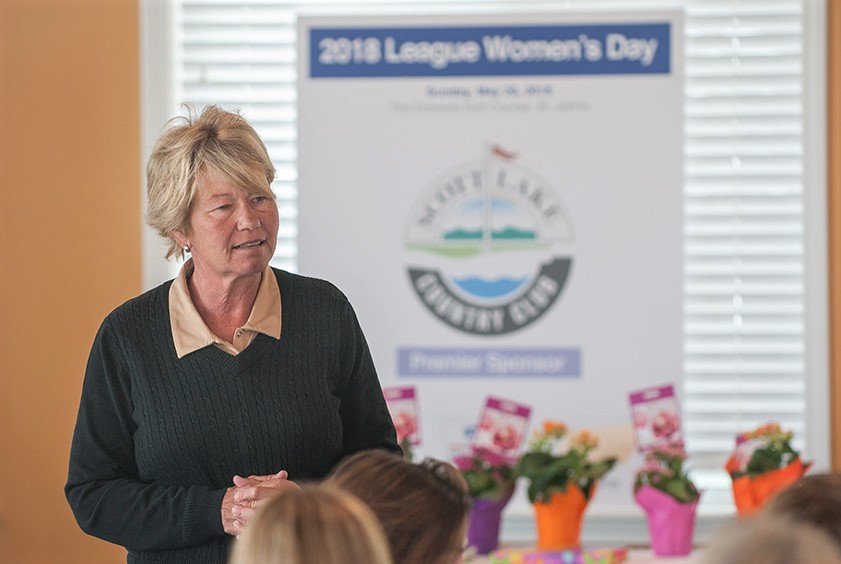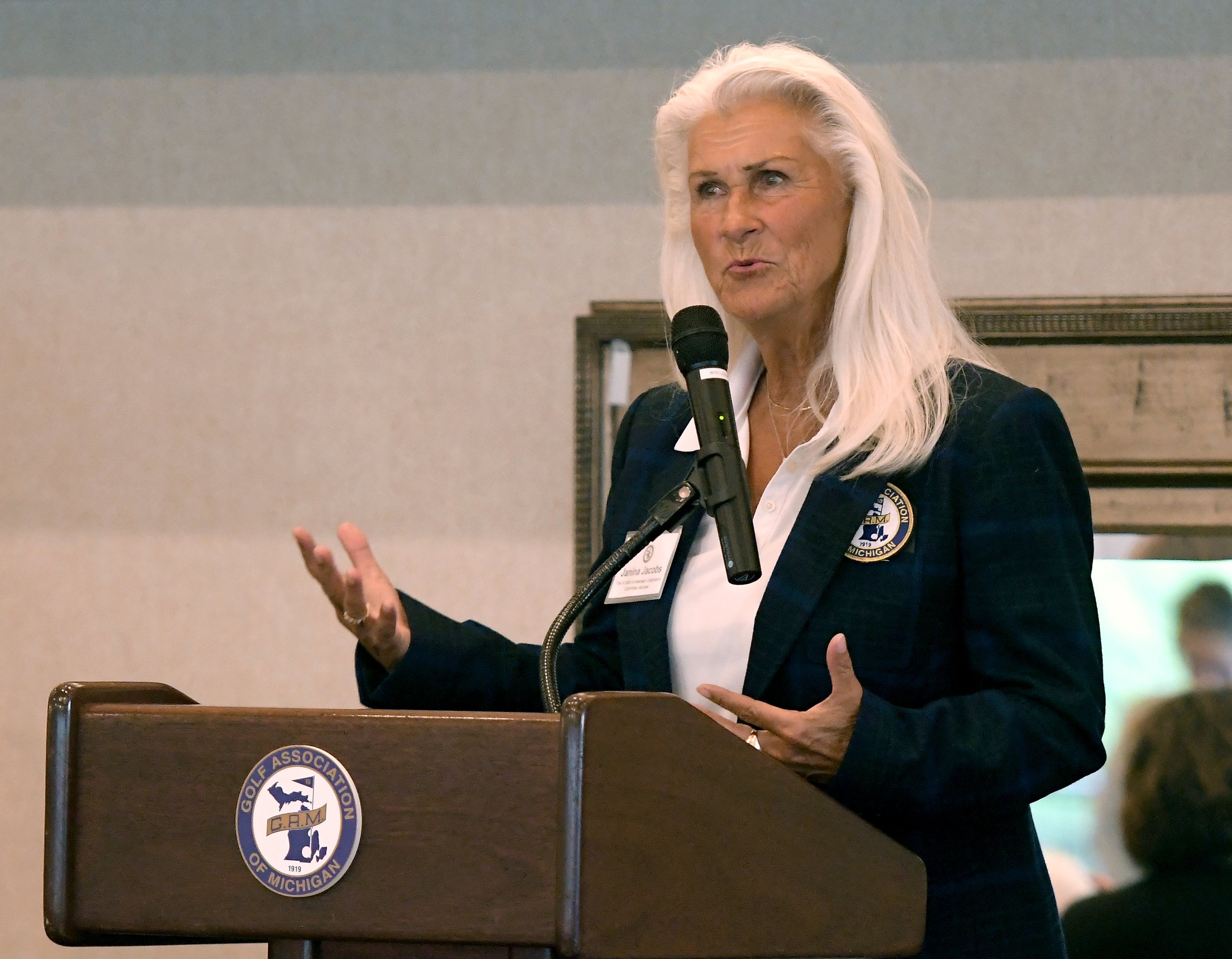Why Are Virtually No Studies Done on Women Golfers?
What would real research tell us about ball distance and other factors?
A Q&A with Janina Parrott Jacobs
Janina Jacobs writes for the MI Golf Journal but also for Sports Illustrated, Michigan Links and HOUR magazine. As a former competitive amateur golfer, she qualified for 18 USGA national championships and was a two-time runner up in the Michigan Women’s State Amateur. Jacobs played both high school and college golf on the boys’/men’s teams (Wayne State) in the earliest days of Title IX, so she understands the dynamic of both men’s and women’s golf. In her numerous roles to expand women’s golf, in recent years she has been exploring best practices for getting more women into the game.
MGJ Question: With the pending rollback of the golf ball, distance discussions are at the forefront of many golf conversations. How will this affect women golfers?
Jacobs: “First of all, making these changes across the board is another example of little, if any, consideration being given to women. I’ve never heard complaints about women hitting the ball ‘too far’ and adjusting course length to mitigate it. This is an issue which applies mainly to men’s professional Tours. Yet, it now affects everyone.”
MGJ: According to rollback guidelines, won’t that yardage loss be minimal?
Jacobs: “True. But what the golf industry doesn’t seem to grasp is that any loss of yardage for women is crucial. There is a disconnect in knowledge about how far – and how – the average woman hits the ball. Many men never play golf with women and have no clue that even an 80-yard shot from the fairway over water to an elevated green protected by bunkers is daunting. With the driver, a forced carry over 100-yards is also scary for the average woman.”
MGJ: What do you mean by ‘how’ a woman hits the ball?
Jacobs: “The trajectories of most women’s shots are much lower than men’s, so any elevation can be difficult to negotiate. A 90-yard shot to a flat green with no forced carry is far different than one to an elevated and protected green, changing from a 7-iron to a hybrid or fairway wood, simply to manage the distance. With the lower trajectory, the green will not likely hold the shot.”
MGJ: We believe most men wouldn’t give a second thought to these types of shots, but they are tough for women?
Jacobs: “Absolutely, considering current statistics show over 70% of women carry handicaps from 21-40. Certainly, there are higher handicap women who can belt the ball, but most do not.”
MGJ: Given that, how far does the average woman hit her drive?
Jacobs: “Good question. Despite a scant few studies done on this, numbers range from 135 – 177 yards with 148-yards considered about average. Also, it is difficult to find out exactly how and on whom the studies were conducted. Most use diagnostic devices to measure distance, swing and ball speed and such, but that really has little bearing on actual conditions out on the course, with wind, wetness, fairway length, elevation, and other variables as crucial factors. It’s like basing your course play on how you hit the ball off of artificial turf or mats at the range. Even the PGA Tour measures driving distance out on the course, using two holes with opposite wind direction and optimally in a flat landing area.”
MGJ: Can you provide examples?
Jacobs: “ARCCOS Golf released a study presenting data obtained from 20 million drives and stating the average driving distance for women is 177 yards, but also ‘revealing’ that female golfers in their 20s average 244 yards. This seems extremely high. However, there is no mention of how many women were tested, whether they are professional or amateur, their ability, how they were recruited for testing, or how the tests were conducted.
“The USGA also puts out distance studies but those are conducted on Tour players. The only information I could find on amateur distances were surveys conducted in 2022 and prior, based on ‘self-reported’ distances golfers hit their driver, 7-iron and wedge. Golfers were also asked how course yardages they regularly play compare to desired yardages. The conclusion was that the average course length played by men matched their favored course yardage; however, for women, the course yardages played exceeded their desired length by 600 yards.”
MGJ: What is your takeaway from all of this?
Jacobs: “Simply that 1) I’ve found no existing studies with enough accurate data to reflect true yardages average women amateurs hit the ball; 2) most courses are too long, without a Forward Tee option short enough to give women a fighting chance to at least try and reach greens in regulation. Every course would need to offer an additional Forward Tee of 4300-4800 yards……or less.”
MGJ: Where do golf course architects stand on this? Do they recommend crafting another set of tees for women and shorter hitting golfers?
Jacobs: “They do. Surprisingly, some resistance comes from course owners and those who cannot believe many women hit the ball so short; and from Greens Committees that don’t want to add an extra tee, sometimes thinking it distracts from design aesthetics.”
MGJ: What are next steps, considering women are the largest emerging market in golf?
Jacobs: “More accurate studies. I’m in the process of creating a team of experts to determine methods for this. A principal partner is Kari Haug, one of few women golf course architects and founder of PlayablePathways TM, an approach to golf course design to improve playability of the golf course for women and seniors. Others are being added to the team, so anyone can contact me for more details.”




